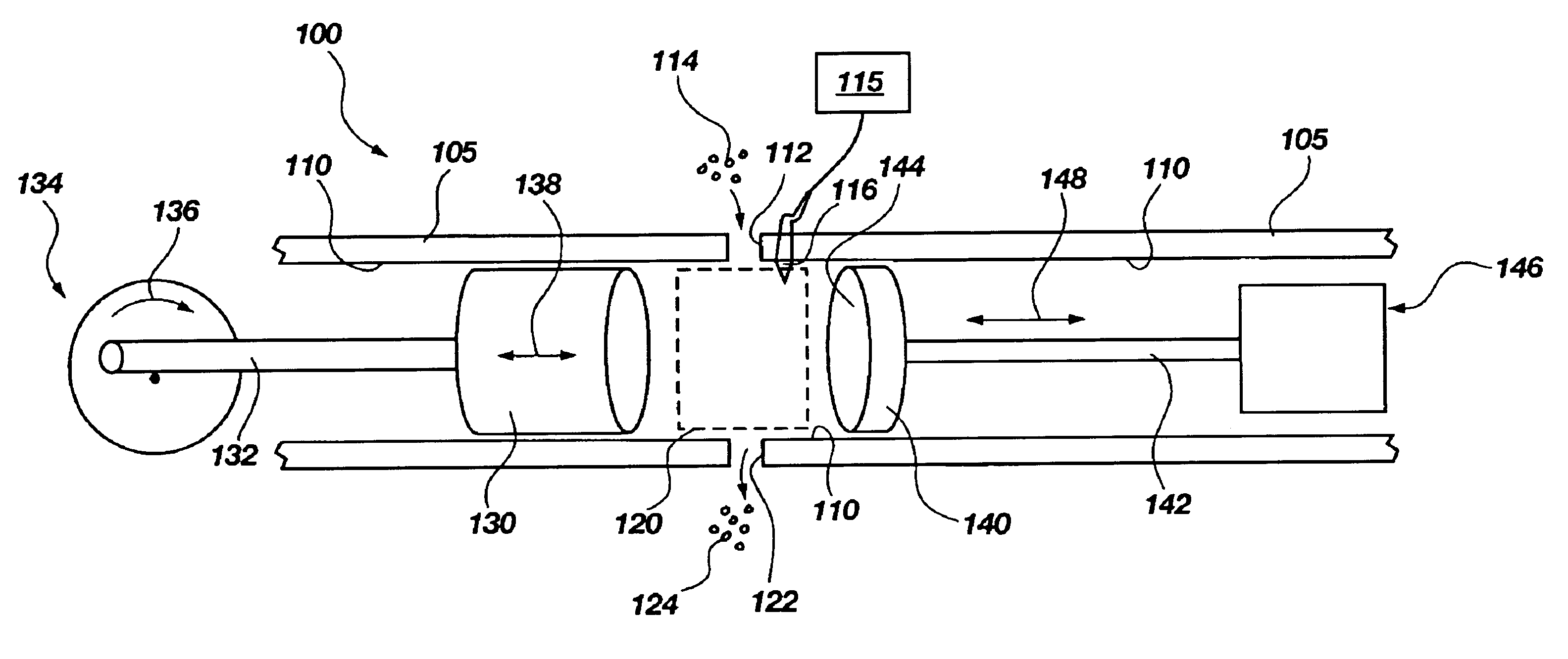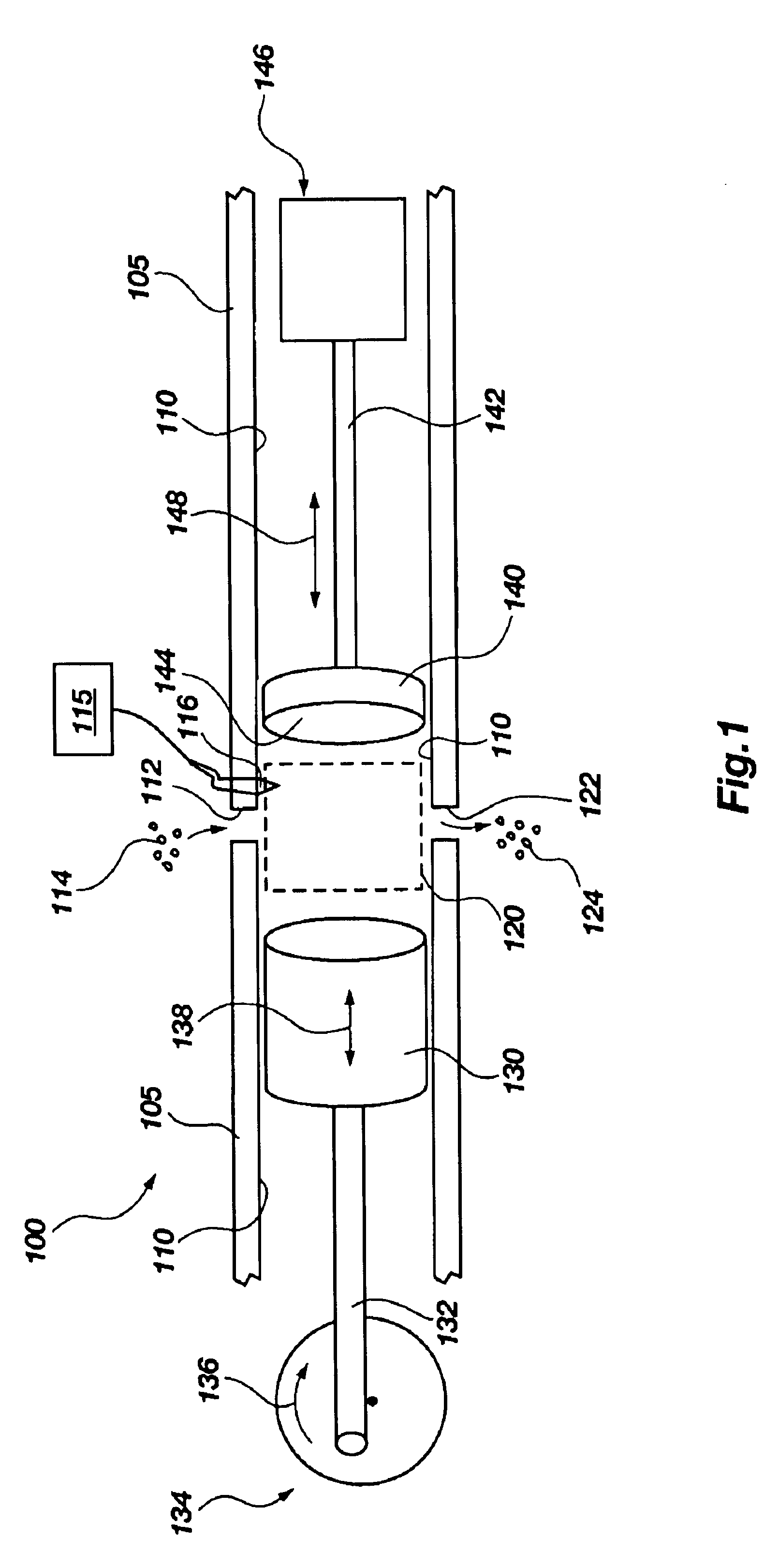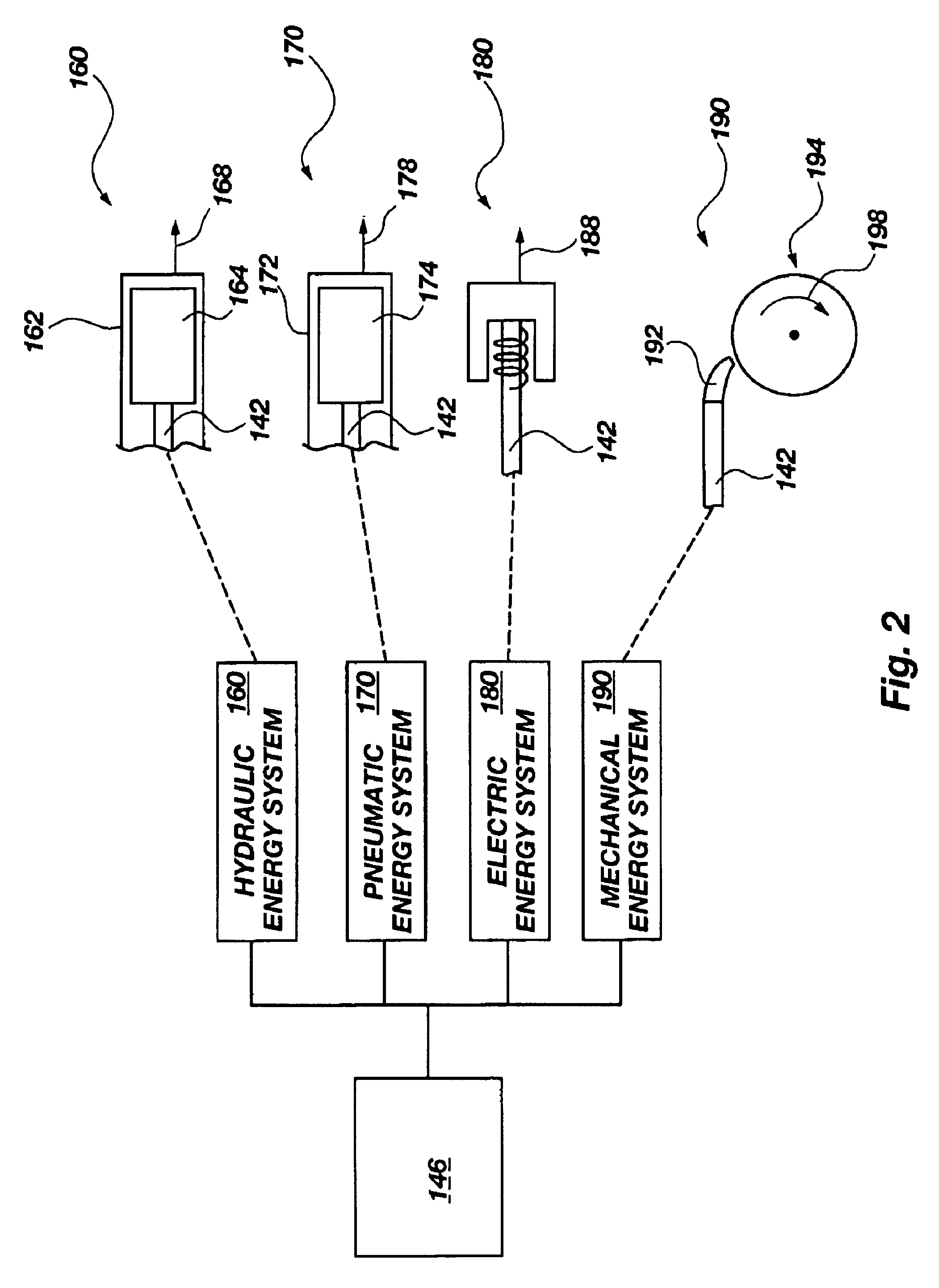Rapid response power conversion device
a power conversion device and rapid response technology, applied in the direction of engines without rotary main shafts, machines/engines, mechanical equipment, etc., can solve the problems of engine not being able to reach the desired change in a very rapid fashion, limitation is particularly problematic, and has not been successfully used in many applications. , to achieve the effect of superior bandwidth characteristics of the engin
- Summary
- Abstract
- Description
- Claims
- Application Information
AI Technical Summary
Benefits of technology
Problems solved by technology
Method used
Image
Examples
second embodiment
[0042]In the second embodiment, the primary piston 230 may reciprocate via combustion or an electric power source to push the fuel 214 from the first compartment to the second compartment of chamber 210. By having a divider portion 250, the combustion at the combustion portion 220 of the chamber 210 can be at least partially, or even totally, isolated from the primary piston 230. Depending on the requirements of the system 200, the controller 215 may be configured to open or close aperture 252 at varying degrees to isolate combustion from the primary piston 230. As such, in the instance of total isolation, a maximum amount of energy to the secondary piston 240 may be transferred by a rapid response to combustion. It is also contemplated that the primary piston 230 in the first compartment 254 may include a positive displacement compressor and / or an aerodynamic compressor, such as a centrifugal compressor.
[0043]Referring now to FIGS. 1 and 4, a graphical diagram of the physical respo...
third embodiment
[0052]Referencing FIG. 8, the rapid response energy extracting system 700 may be provided in a non-combustion engine, according to the present invention. The system 700 includes a chamber 710 with a primary piston 730 and a secondary piston 740. Instead of internal combustion provided by fuel and oxygen, a fluid 714, such as a monopropellant or hydrogen peroxide, may enter through an intake port 712 of the chamber 710. The fluid 714 may pass through or over a reaction member 720, such as a catalyst or heat-exchanger. Such a catalyst may include silver, silver alloy, and / or a silver / ceramic material. As the fluid 714 passes over the reaction member 720, a rapid non-combustive reaction results, which may include rapid decomposition of the fluid 714 and / or vaporization of the fluid 714. As in the IC engine, such rapid non-combustive reaction causes a rapid response from the secondary piston 740 for extracting a portion of energy from the rapid non-combustive reaction. In this system, t...
PUM
 Login to View More
Login to View More Abstract
Description
Claims
Application Information
 Login to View More
Login to View More - R&D
- Intellectual Property
- Life Sciences
- Materials
- Tech Scout
- Unparalleled Data Quality
- Higher Quality Content
- 60% Fewer Hallucinations
Browse by: Latest US Patents, China's latest patents, Technical Efficacy Thesaurus, Application Domain, Technology Topic, Popular Technical Reports.
© 2025 PatSnap. All rights reserved.Legal|Privacy policy|Modern Slavery Act Transparency Statement|Sitemap|About US| Contact US: help@patsnap.com



